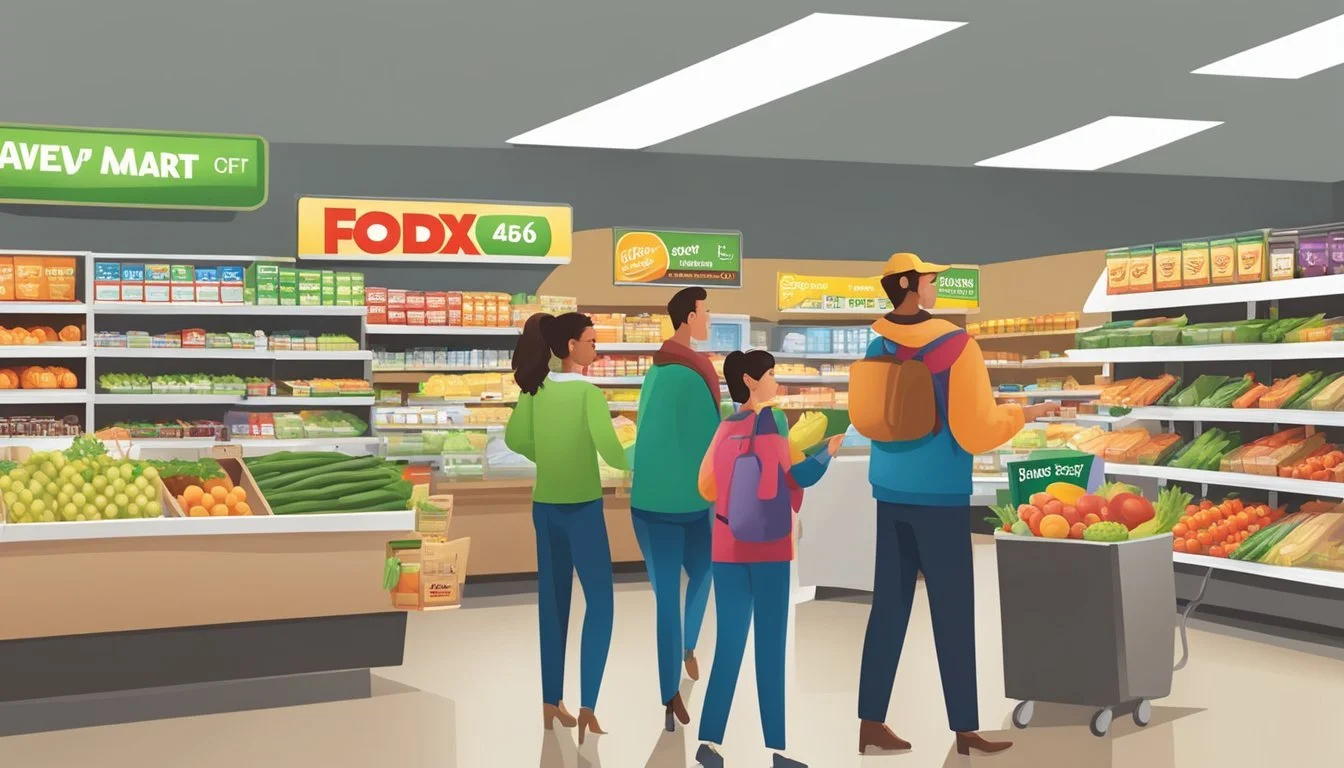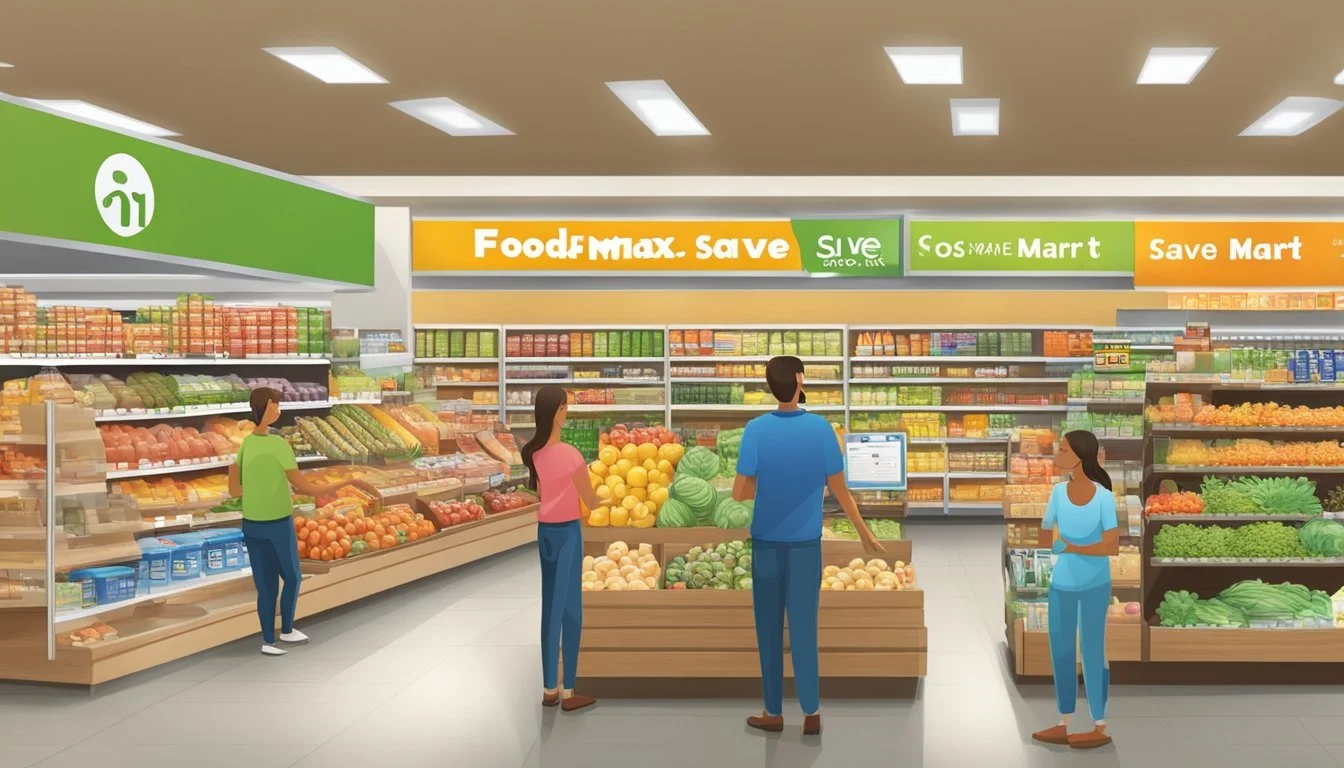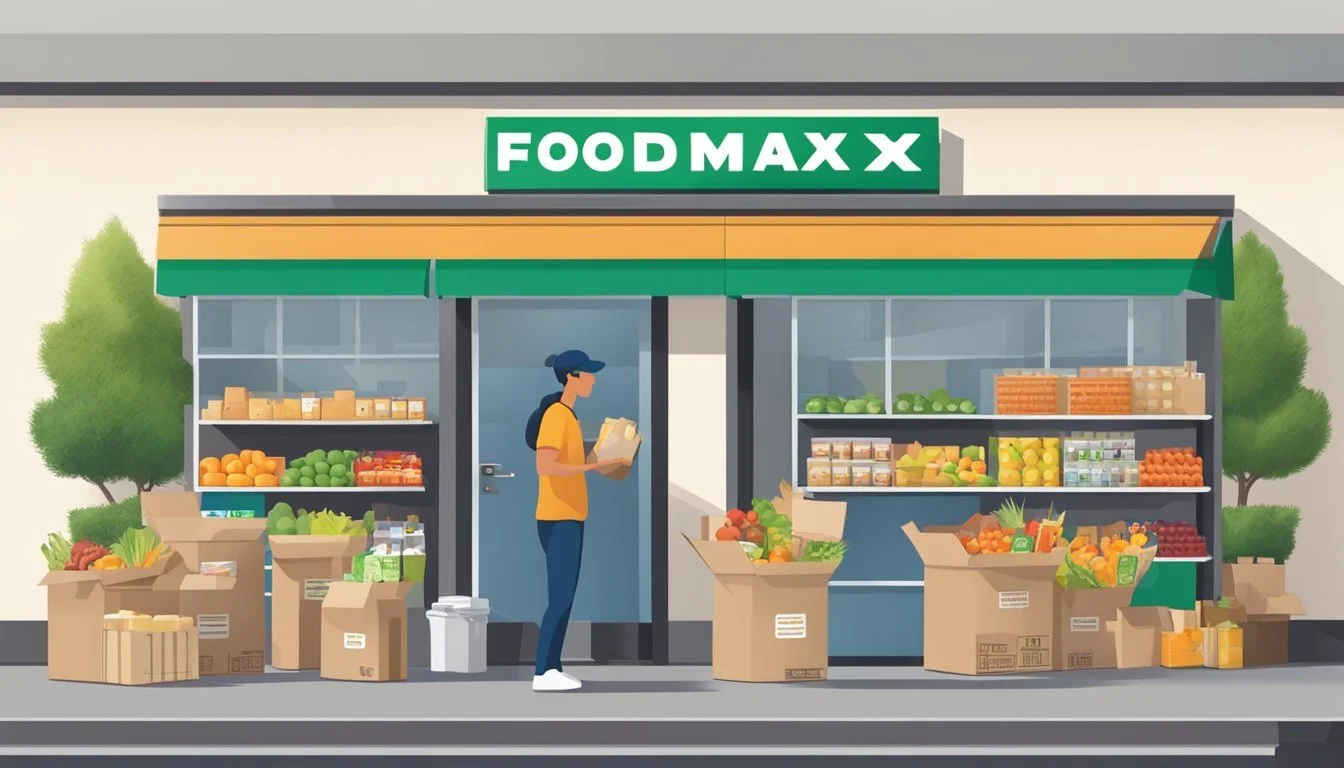FoodMaxx vs Save Mart
A Comprehensive Comparison of Prices and Selection
Grocery shopping can be a significant expense for many households, making the choice of store crucial for budget-conscious consumers. In California's Bay Area, two popular options are FoodMaxx and Save Mart. These grocery chains offer different shopping experiences and pricing strategies.
FoodMaxx generally provides lower prices compared to Save Mart, with savings of about 3% on average grocery purchases. This difference can add up over time, especially for families or frequent shoppers. However, price isn't the only factor to consider when choosing a grocery store.
Save Mart, owned by The Save Mart Companies, operates stores throughout northern and central California. It offers a wider selection of products and services compared to FoodMaxx. The decision between these two stores often comes down to individual preferences, prioritizing either cost savings or a more comprehensive shopping experience.
Company Backgrounds
FoodMaxx and Save Mart are both grocery store chains owned by The Save Mart Companies. This parent company operates 194 stores across California and Nevada under multiple banners.
Save Mart was founded in 1952 in Modesto, California. It has grown to become a major regional grocery retailer in the Central Valley area.
FoodMaxx was launched later as a warehouse-style discount grocery chain. It aims to offer lower prices through a no-frills shopping experience.
The Save Mart Companies also owns the Lucky and Lucky California store brands. In total, the company operates:
79 Save Mart stores
61 Lucky/Lucky California stores
54 FoodMaxx stores
In 2022, The Save Mart Companies was acquired by the Jim Pattison Group, a diversified Canadian company. This acquisition brought new ownership to the FoodMaxx and Save Mart brands.
Both chains continue to focus on serving customers in California and northern Nevada. They compete for market share in many of the same regions, especially throughout California's Central Valley.
Store Layout and Shopping Experience
FoodMaxx and Save Mart offer distinct shopping environments tailored to different customer preferences. FoodMaxx emphasizes efficiency and value, while Save Mart focuses on a more traditional supermarket experience.
FoodMaxx: Warehouse-Style Convenience
FoodMaxx stores feature a no-frills warehouse layout designed for budget-conscious shoppers. Wide aisles accommodate pallets of bulk items and allow for easy navigation. The open floor plan resembles warehouse clubs, with minimal decor and basic shelving.
Product organization prioritizes efficiency over aesthetics. Shoppers find everyday essentials grouped together, facilitating quick trips. The produce section offers a straightforward selection of fresh fruits and vegetables at competitive prices.
Check-out areas include both staffed lanes and self-service options to reduce wait times. FoodMaxx's simplified approach appeals to customers seeking value and convenience without extra amenities.
Save Mart: Friendly Neighborhood Store
Save Mart stores provide a more traditional supermarket layout with a focus on customer service. The welcoming atmosphere includes brighter lighting and colorful department signage. Aisles are arranged in a familiar grocery store pattern, making it easy for shoppers to locate items.
The produce department showcases a wide variety of fresh fruits and vegetables, often featuring local and seasonal options. Specialty sections like the deli and bakery offer prepared foods and custom orders.
Save Mart's layout encourages browsing, with end-cap displays highlighting weekly specials. The stores typically include a pharmacy and floral department for added convenience. Friendly staff members are available throughout the store to assist customers and answer questions.
Product Availability and Selection
FoodMaxx and Save Mart differ in their product offerings and selection. Both stores aim to meet customers' grocery needs, but their focus and variety vary in key areas.
Produce and Meat Quality
FoodMaxx emphasizes affordable produce options. Their fruit and vegetable selection tends to be basic but well-priced. The store offers a mix of conventional and some organic produce items.
Save Mart, in contrast, provides a wider range of produce choices. They stock a larger variety of fresh fruits and vegetables, including more specialty and seasonal items. Save Mart's produce department often features higher-quality options.
In the meat department, FoodMaxx offers standard cuts at competitive prices. Their selection is adequate for most shoppers' needs.
Save Mart's meat counter typically has a more extensive selection. They offer a broader range of cuts, grades, and specialty meats. The quality of Save Mart's meats is generally considered superior to FoodMaxx's offerings.
Organic and Specialty Options
FoodMaxx carries a limited selection of organic products. Their focus is primarily on conventional grocery items to keep prices low.
Save Mart provides a more robust organic section. They stock a wider variety of organic produce, dairy, and packaged goods. This makes Save Mart a better choice for shoppers prioritizing organic options.
For specialty items, Save Mart has the edge. They offer more gourmet, international, and diet-specific products. This includes a larger selection of gluten-free, vegan, and ethnic foods.
FoodMaxx's specialty options are more limited. They carry some popular alternative diet products but focus mainly on mainstream grocery items.
Pricing Strategies
FoodMaxx and Save Mart employ different pricing approaches to attract customers and drive sales. Their strategies impact overall affordability and potential savings for shoppers.
Everyday Low Prices vs. Weekly Deals
FoodMaxx focuses on maintaining consistently low prices across its product range. This approach aims to provide customers with reliable savings on every shopping trip. Save Mart, in contrast, uses a mix of regular prices and rotating weekly deals. Their circulars feature discounted items and special promotions.
FoodMaxx's strategy appeals to budget-conscious shoppers who prefer predictable pricing. Save Mart's approach can benefit customers who plan purchases around sales and don't mind varying prices week-to-week.
Savvy shoppers may find deeper discounts on certain items during Save Mart's promotions. However, FoodMaxx's everyday low prices often result in lower overall grocery bills for many households.
Comparing Common Items
A price comparison of common grocery items reveals differences between the two stores. FoodMaxx typically offers lower prices on staple goods like milk, bread, and eggs. Save Mart may have competitive pricing on these items during sales, but their regular prices tend to be higher.
For example:
Gallon of milk: FoodMaxx $2.99, Save Mart $3.49
Loaf of white bread: FoodMaxx $1.79, Save Mart $2.29
Dozen large eggs: FoodMaxx $2.49, Save Mart $2.99
Produce prices can vary significantly. FoodMaxx often has lower prices on fruits and vegetables, but Save Mart may offer better deals during seasonal promotions.
Packaged goods and name-brand items may have similar pricing at both stores, with occasional deeper discounts at Save Mart during promotional periods.
Customer Service and Satisfaction
FoodMaxx and Save Mart prioritize customer satisfaction through different approaches. Each store has its own strengths when it comes to checkout efficiency and staff interactions.
Checkout Efficiency
FoodMaxx emphasizes quick transactions. The stores often feature self-checkout options, reducing wait times during busy periods. Cashiers are trained to scan items rapidly, keeping lines moving swiftly.
Save Mart takes a more personalized approach. While checkout speeds may be slightly slower, cashiers often engage in friendly conversation. The stores typically have more manned registers open, aiming to balance efficiency with personal service.
Both chains have implemented loyalty programs to speed up transactions. FoodMaxx's MaxxValue card and Save Mart's digital app allow customers to access discounts quickly at checkout.
Staff Friendliness and Helpfulness
FoodMaxx staff maintain a professional demeanor. Employees are trained to answer questions efficiently and direct customers to products. The focus is on functionality rather than extensive interactions.
Save Mart places a higher emphasis on customer engagement. Staff members often receive additional training in product knowledge and customer service skills. They're encouraged to assist shoppers in finding items and making product recommendations.
Both stores have policies for handling customer complaints and returns. FoodMaxx tends to have streamlined processes, while Save Mart may offer more flexibility in resolving issues on a case-by-case basis.
Customer feedback on review sites generally rates Save Mart slightly higher for staff friendliness, while FoodMaxx scores well for quick, no-frills service.
Loyalty Programs and Discounts
Both FoodMaxx and Save Mart offer rewards programs to provide value to their customers. These programs offer various benefits and savings opportunities throughout the year.
Membership Benefits
FoodMaxx's rewards program provides members with exclusive discounts on select items each week. Customers can sign up for free and start saving immediately. The program tracks purchases, allowing members to earn points on nearly every dollar spent.
Save Mart's loyalty program, available through their mobile app, offers personalized deals based on shopping habits. Members earn points on purchases, which can be redeemed for discounts on future shopping trips. The app also provides access to digital coupons and special promotions.
Both stores' programs offer extra rewards on birthdays and anniversaries. Save Mart's app includes features like shopping lists and digital receipts for added convenience.
Seasonal Promotions
FoodMaxx and Save Mart run special promotions during major holidays. Valentine's Day typically sees discounts on chocolates, flowers, and romantic dinner ingredients. Both chains offer competitive prices on turkeys and hams during Thanksgiving and Christmas seasons.
Back-to-school periods feature deals on lunch supplies and snacks. Summer promotions often include discounts on barbecue essentials and picnic items. FoodMaxx is known for its aggressive pricing on seasonal produce.
Save Mart occasionally partners with other companies for cross-promotions. These collaborations can result in unique savings opportunities for customers, such as fuel discounts or movie ticket deals with purchases.
Online Shopping and Delivery Services
FoodMaxx and Save Mart have embraced e-commerce and delivery services to meet evolving consumer needs. Both chains offer convenient options for customers who prefer to shop from home.
Grocery Delivery Options
Save Mart has partnered with Shipt to provide same-day grocery delivery from over 170 stores. This service covers Save Mart, FoodMaxx, and Lucky California locations. Customers can place orders through the Shipt app or website.
FoodMaxx and Save Mart also work with Instacart for delivery services. Instacart offers flexible delivery windows, often within hours of ordering. The minimum order amount is $10, with delivery fees starting at $3.99 for non-members.
For frequent shoppers, Instacart Express membership costs $99/year or $9.99/month. This provides free delivery on orders over $35.
Innovation in Logistics
Both chains are investing in smart refrigerated transport to maintain food quality during delivery. These temperature-controlled vehicles ensure fresh produce, dairy, and frozen items arrive in optimal condition.
FoodMaxx and Save Mart are exploring AI-powered inventory management systems. These tools help predict demand and optimize stock levels, reducing waste and improving product availability for online orders.
The stores are also testing automated fulfillment centers. These facilities use robotics to pick and pack online orders more efficiently, potentially reducing delivery times and costs for customers.
Company Strategies and Partnerships
Both FoodMaxx and Save Mart have implemented strategic initiatives to strengthen their market positions. These companies have focused on expansion efforts and formed key partnerships to enhance their offerings and customer experience.
Expansion and Investment
FoodMaxx and Save Mart have pursued different expansion strategies. FoodMaxx has concentrated on opening new stores in underserved areas, offering discount prices to attract budget-conscious shoppers. Save Mart, on the other hand, has invested in renovating existing locations and introducing new store formats.
Save Mart operates nearly 200 stores across California and Western Nevada under various banners, including Save Mart, Lucky, and FoodMaxx. The company has also invested in its distribution network, partnering with Super Store Industries to operate a distribution center in Lathrop, California.
Strategic Partnerships
Save Mart has formed a significant partnership with Instacart to enhance its omnichannel capabilities. This collaboration extends to almost all 200 Save Mart, FoodMaxx, and Lucky locations. The partnership includes the deployment of smart carts and new e-commerce solutions to improve the shopping experience.
Additionally, Save Mart has partnered with Quad/Graphics, Inc. to implement in-store retail media at 16 stores, with plans for chainwide expansion. This initiative includes digital screens, kiosks, and shelf screens to engage customers and boost sales.
Kingswood Capital Management, the owner of The Save Mart Companies, has supported these strategic partnerships to strengthen the company's market position and technological capabilities.
Branding and Marketing Techniques
FoodMaxx and Save Mart employ distinct strategies to attract customers and build brand loyalty. Their approaches to private labels, marketing campaigns, and public image shape how shoppers perceive each store.
Private Labels and Exclusive Products
FoodMaxx focuses on offering a wide range of budget-friendly store brands. Their private label products cover staples like bread, milk, and canned goods at competitive prices. Save Mart, on the other hand, emphasizes quality with its Sunny Select and Sunnyside Farms brands. Sunnyside Farms dairy products, including milk and ice cream, are produced in the company's own facilities.
Save Mart's bakery section features freshly baked goods under its private label, appealing to customers seeking homemade quality. FoodMaxx's bakery offerings tend to be more limited, with a focus on pre-packaged items.
Marketing Campaigns and Public Perception
FoodMaxx's marketing centers on value and savings. Their campaigns often highlight price comparisons and bulk-buying options. They target budget-conscious shoppers in metro areas with straightforward, no-frills messaging.
Save Mart takes a community-oriented approach. Their marketing emphasizes fresh produce, local partnerships, and customer service. They sponsor local events and charities, fostering a positive public image as a neighborhood-friendly grocer.
Both chains use digital coupons and loyalty programs. FoodMaxx's app focuses on deal alerts, while Save Mart's includes personalized offers and recipe ideas. These digital tools help each brand connect with tech-savvy customers and drive repeat visits.
Community Involvement and Sustainability
FoodMaxx and Save Mart both engage in community-oriented initiatives and sustainability efforts. Their approaches focus on local sourcing, supporting community programs, and implementing environmentally friendly practices in their operations.
Local Sourcing and Community Support
FoodMaxx emphasizes partnerships with local farmers and producers. This strategy ensures fresher produce for customers while supporting regional economies. The company frequently hosts in-store events showcasing local products and artisans.
Save Mart, through its partnership with Flashfood, has taken steps to address food accessibility. The Flashfood app offers discounted items nearing their best-by date at 44 Lucky stores in the San Francisco Bay Area. This initiative helps reduce food waste while providing affordable options to families.
Both chains participate in food donation programs, collaborating with local food banks and charities. These efforts help combat hunger in their communities.
Sustainability Efforts
FoodMaxx has implemented energy-efficient lighting and refrigeration systems in its stores. The company also encourages customers to use reusable bags, offering small discounts as incentives.
Save Mart has made strides in reducing its environmental impact. The company has installed solar panels on some store rooftops, generating clean energy. They've also introduced compostable packaging for certain product lines.
Both retailers have invested in more fuel-efficient delivery trucks. This move reduces their carbon footprint in transporting goods to stores.
FoodMaxx and Save Mart participate in recycling programs for cardboard, plastic, and food waste. These initiatives divert significant amounts of waste from landfills annually.
Conclusion
FoodMaxx and Save Mart offer distinct shopping experiences for consumers. FoodMaxx focuses on providing low prices through a no-frills approach. Save Mart emphasizes a wider selection and enhanced customer service.
For budget-conscious shoppers, FoodMaxx may be the better choice. Its lower prices on many staple items can lead to significant savings on a family's grocery bill.
Save Mart appeals to those who value variety and a more traditional supermarket atmosphere. Its larger product range caters to diverse tastes and dietary needs.
The best choice depends on individual priorities. Consumers should consider factors like budget, desired product selection, and shopping preferences when deciding between the two stores.
Comparing market baskets at both stores can help families determine which offers better value for their specific needs. Regular price checks and promotional offers may also influence the decision.
Ultimately, some shoppers may find benefits in utilizing both stores. This strategy allows them to take advantage of the strengths each retailer offers.









